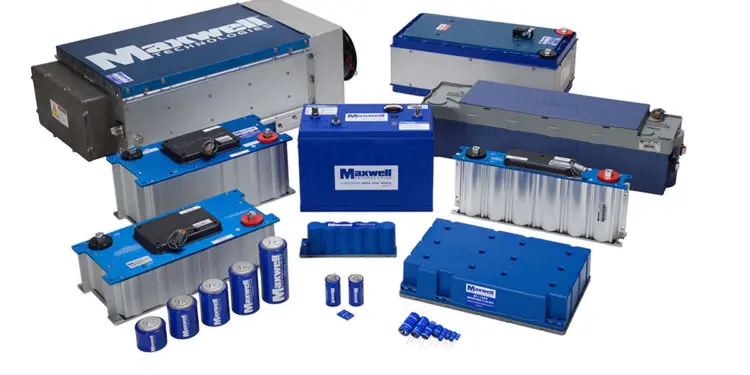Tesla sells the supercapacitor business and the Maxwell Technology brand after two years. Maxwell Technology is no longer part of Tesla. Tesla only acquired Maxwell Technology in early 2019. The company deals with ultracapacitors, among other things, but they were probably not of interest to Tesla. Tesla has now sold this business and the brand name again.
Tesla reason to purchase the supercapacitor manufacturer was not its interest to step into supercapacitor business, but the dry electrode technology for battery cells developed by Maxwell. This technology is used in the 4680 battery cell. Tesla sells Maxwell to UCAP Power, Inc based in San Diego, California. UCAP has several former Tesla and Maxwell employees. Boss Gordon Schenk was formerly responsible for Maxwell at Tesla. The parties have agreed not to disclose the purchase price.
UCAP Power, Inc., a leading developer of ultracapacitor-based power solutions, announced on 14th July 2021 it has completed the purchase of Maxwell Technologies Korea, the Korean-based ultracapacitor business, as well as other related assets including the Maxwell brand.
With the addition of these assets, which includes system patents and products, UCAP Power is building upon its foundation of success in driving innovation across the energy storage market, most recently exemplified by the launch of the Company’s POWERBLoK™ battery replacement solution. POWERBLoK’s unique customer-friendly design incorporates integrated charging and control to offer a scalable, long-life, safe sustainable alternative to lead-acid batteries.
“We’re thrilled to combine Maxwell Technologies Korea’s ultracapacitor manufacturing capabilities and one of the largest patent and product portfolios in the industry with the growing family of products developed by UCAP Power” said Gordon Schenk, CEO of UCAP Power. This combination creates a clear market leader in the wind turbines, reserve power, automotive transportation, microgrid application markets.
Looking ahead, the Company is focused on further growing the market for ultracapacitor based solutions, with specific focus on three main areas:
- Systems and application expertise – Moving beyond ultracapacitor as a component.
- Intelligent electronics integration – Increasing value while reducing overall system costs.
- Advanced chemistry and processes – Resetting traditional standards with a green emphasis.
“We believe the combination of these three elements will better enable our customers to design, develop and deliver many promising energy storage solutions as we move forward into a more fully electrified world,” concludes Schenk. “With market opportunities valued at more than $7B annually by 2027*, our team is ready for the challenge, and we look forward to announcing new and industry leading product updates on a rolling basis.”
About UCAP Power Inc.
San Diego-based UCAP Power provides ultracapacitor-based power solutions across a wide range of renewable markets. Established in 2019, the company was founded by proven leaders in the ultracapacitor market, who had previously held positions in Maxwell Technologies’ leadership and
product teams prior to Maxwell’s acquisition in 2019. UCAP Power’s ultracapacitor systems use sustainable based products offering a long-lasting source of reliable high-power energy storage that can help eliminate lead-acid and other hazardous materials in batteries. UCAP Power is a proud
portfolio company of EvoNexus, California’s leading non-profit technology incubator and a member of Southern California Energy Innovation Network (SCEIN).


































